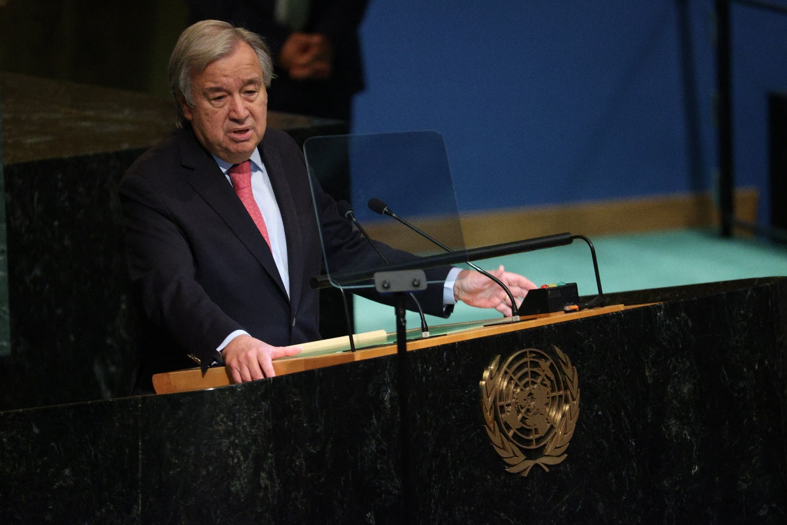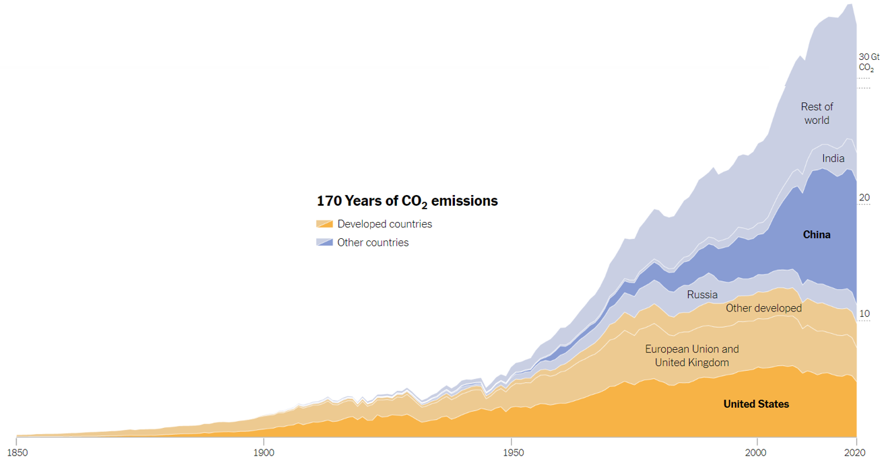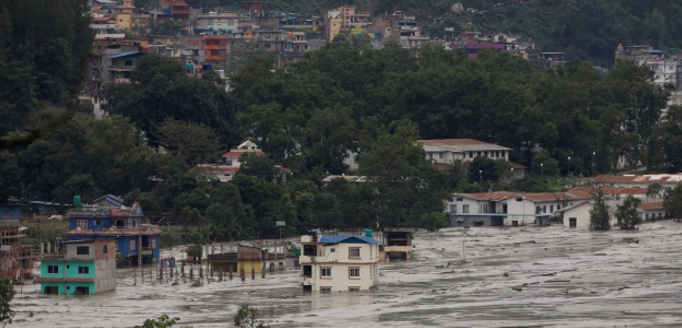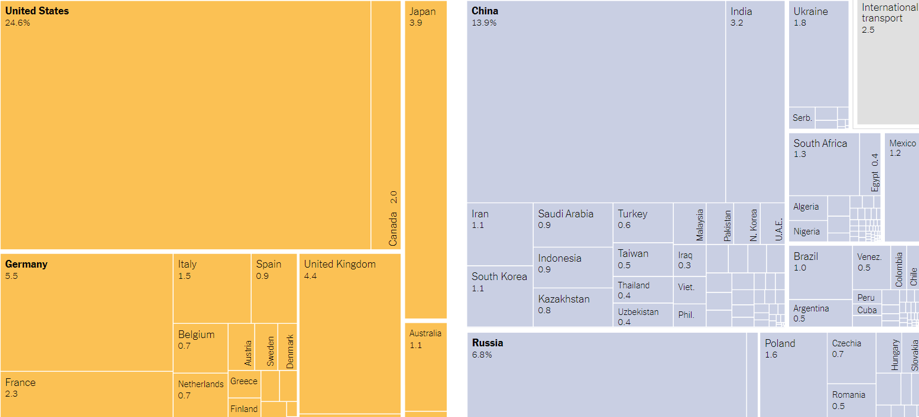Denmark recently became the first developed country to offer a “loss and damage” climate fund of 13.5 million EUR to support adaptation in the poorest and most vulnerable countries.
Climate-induced “loss and damage” fund covers the most severe effects of climate change, which cannot be avoided through the local mitigation of greenhouse gas-emissions or climate adaptation. It encompasses sudden catastrophes, such as hurricanes, drought, or forest fires as well as slow onset events, such as rising sea levels.
This “loss and damage” climate fund came up in the wake of U.N. chief Antonio Guterres addressing world leaders at the 193-member U.N. General Assembly. He urged rich countries to tax windfall profits of fossil fuel companies and use that money to help countries harmed by the climate crisis and people who are struggling with rising food and energy prices.
“The fossil fuel industry is feasting on hundreds of billions of dollars in subsidies and windfall profits while household budgets shrink and our planet burns,” he said.

The United States, EU, and other rich nations that represent the bulk of historical greenhouse gas emissions have opposed the creation of a separate fund to address loss and damage.
Is it fair that some countries contribute more while they are being affected by climate change too?

Note: The rich, developed countries group is based on the United Nations’ Annex II definition.
The rich developed countries including the United States, Canada, Japan, and much of western Europe account for 12% of the world population today. However, they are responsible for 50% of all the planet-warming greenhouse gases released from fossil fuels and industry over the past 170 years.
When human society began to industrialize in 1850, we started to change the chemistry of the atmosphere by adding CO2 to the air. Over 170 years, Earth has heated up by roughly 1.1 degrees Celsius, fueling a climate change crisis.
The industrial revolution took root in Britain and then spread to other parts of the world like the United States, France, Germany, Japan, etc. The rise of industries meant a source of wealth in the face of rising industrial production and increased international trade. This resulted in the affluence of some countries and their exploitation of the ecosystem with industrial emissions.
Most of the ‘other’ countries in the world like China and India did not begin their first industrial revolutions until the 20th century, while the opulent countries underwent a “second” industrial revolution by the late 19th century.
The most famous climate change monitoring research project was the monitoring station set up established in 1958 by the Scripps Institution of Oceanography on top of Hawaii’s Mauna Loa Observatory. Scripps’ geochemist Charles Keeling recorded an upward curve (named Kneeling curve), showing a steady rise in CO2 levels. The dawn of advanced computer modeling in the 1960s began to predict possible outcomes of the rise in CO2 levels made evident by the Keeling Curve. Computer models consistently showed that a doubling of CO2 could produce warming of 2 degrees Celsius within the next century. 1988 was a critical turning point when various extreme weather events placed global warming in the spotlight.

The United States, United Kingdom and the European Union were the heaviest contributors to CO2 emissions in the stages leading up to the 1988 turning point. So, would it be wrong to ask these economies to compensate the climate change vulnerable countries that cannot afford to tackle the impact?
“We have contributed the least to this problem, yet we suffer disproportionately. There must be increasing support for adapting to impacts,” said Mr. Wagdi, chair of the 47 nations bloc known as Least Developed Countries.
One of the lucid examples of this disproportionate burden of climate change is the country of Bhutan which bears little responsibility for global warming since the nation currently absorbs more carbon dioxide from its vast forests than is emitted from its cars and homes. Nonetheless, Bhutan is facing severe risks from melting glaciers in the Himalayas, creating flash floods and mudslides that have devastated villages.

The wealthier countries got a head-start to develop infrastructure and have funds to deal with the unforeseen effects of climate change. But economically under-developed countries don’t have the means to adapt to every storm, hurricane or famine worsened by climate change, on their own.
The world will continue to warm. People will continue to die from climate-related disasters. Land will continue to disappear beneath rising seas. The poor and vulnerable countries, which still produce a tiny fraction of overall emissions, have asked for a separate fund, paid for by wealthy countries, to compensate them for the damages they can’t prevent.
Wealthy countries have historically resisted calls for a specific funding mechanism for loss and damage, fearing that it could open the door to a flood of liability claims. The narrative is now being shifted to how developing countries are large emitters and historical responsibility is not the only way to look at the issue. Some of the world’s biggest developing economies like China are beginning to catch up on emissions.

China is historically responsible for 13.9 percent of all greenhouse gases since 1850. But today it is the world’s largest emitter, accounting for roughly 31 percent of all CO2 emissions in 2020.
Taking note that the rich developed countries still account for roughly one-third of all CO2 emissions in 2020, they cannot forgo their responsibility for bringing the world to the precipice of the climate crisis. Developing countries also need to take responsibility for their emissions in the present. One of the arguments offered by these countries is that they need to industrialize to catch up to the developed countries. It is unfair that developed countries did the same 170 years ago and don’t want developing countries to do it now. But considering the gravity of the climate crisis, developing countries need to show unprecedented responsible leadership instead of giving excuses to repeat past mistakes and find alternative ways to industrialize without further aggravating the climate crisis.
It would only be fair to bear the brunt of industrialization through carbon emissions. If the developing countries continue to emit CO2 without deliberation on its consequences, they should proportionately contribute to the “loss and damage” climate fund for playing a part in worsening vulnerable countries’ situations.
At COP 26, governments agreed to forge a framework to address “loss and damage”, but there was no agreement on the funding mechanism. Denmark’s action is a small step in the right direction, but the world needs countries responsible to step up and act. The “loss and damage” climate fund will help vulnerable nations with devastation relief and reinforce the collective commitment to leaving no one behind.
References:
Magnus Højberg Mernild, 09/2022, State of Green, “Denmark becomes first to offer ‘loss and damage’ climate funding”
Valerie Volcovici, 09/2022, Reuters, “Denmark becomes first to offer ‘loss and damage’ climate funding”
Nadja Popovich and Brad Plumer, 11/2021, The New York Times, “Who has the most historical responsibility for climate change?”
Editors, 10/2017, History, “Climate change history”
Fiona Harvey, 09/2022, The Guardian, “Denmark offers ‘loss and damage’ funding to poorer countries for climate breakdown”

